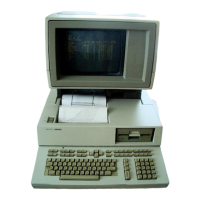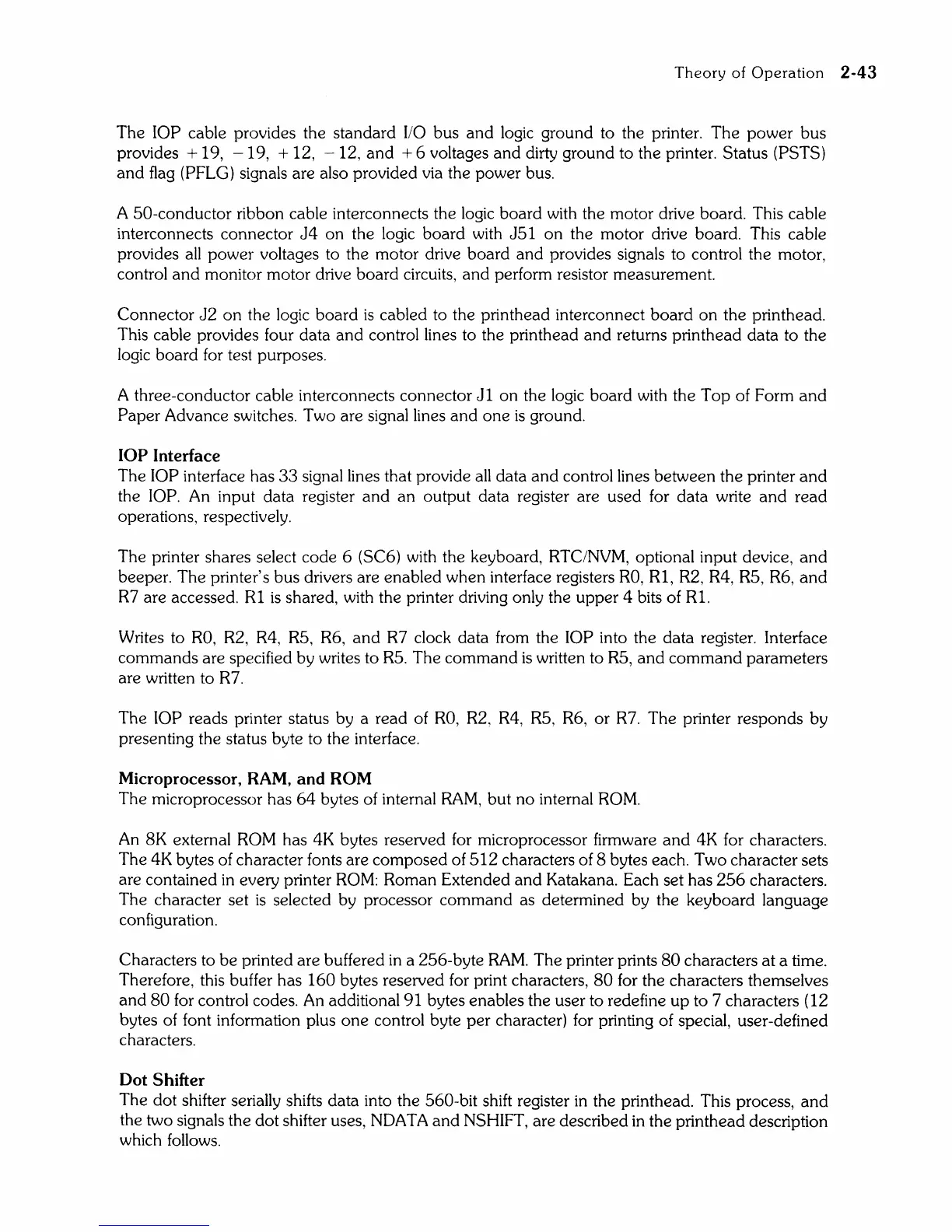Theory
of
Operation
2-43
The
lOP cable provides the standard
110
bus
and
logic ground to the printer. The
power
bus
provides
+ 19,
-19,
+ 12,
-12,
and
+ 6 voltages
and
dirty ground to the printer. Status (PSTS)
and
flag (PFLG) signals are also provided via the power bus.
A 50-conductor ribbon cable interconnects the logic board with the motor drive board. This cable
interconnects connector
J4
on
the logic board with J51
on
the motor drive board. This cable
provides
all
power voltages to the motor drive board
and
provides signals to control the motor,
control
and
monitor motor drive board circuits,
and
perform resistor measurement.
Connector
J2
on
the logic board
is
cabled to the printhead interconnect board on the printhead.
This cable provides four data
and
control lines to the printhead
and
returns printhead data to the
logic board for test purposes.
A three-conductor cable interconnects connector
Jl
on
the logic board with the
Top
of Form
and
Paper
Advance switches. Two are signal lines
and
one
is
ground.
lOP
Interface
The lOP interface has
33
signal lines that provide
all
data
and
control lines between the printer
and
the lOP. An input data register
and
an output data register are used for data write
and
read
operations, respectively.
The printer shares select code 6
(SC6) with the keyboard, RTC/NVM, optional input device,
and
beeper. The printer's bus drivers are enabled when interface registers
RO,
Rl,
R2, R4, R5, R6,
and
R7
are accessed.
Rl
is
shared, with the printer driving only the upper 4 bits of
RI.
Writes to
RO,
R2, R4, R5, R6,
and
R7 clock data from the lOP into the data register. Interface
commands are specified by writes to
R5.
The
command
is
written to R5,
and
command
parameters
are written to R7.
The
lOP reads printer status by a read of
RO,
R2, R4, R5, R6,
or
R7.
The printer responds by
presenting the status
byte to the interface.
Microprocessor, RAM,
and
ROM
The microprocessor has
64
bytes of internal
RAM,
but no internal
ROM.
An
8K external ROM has 4K bytes reserved for microprocessor firmware
and
4K for characters.
The 4K bytes of character fonts are composed of
512
characters of 8 bytes each. Two character sets
are contained
in
every printer
ROM:
Roman Extended
and
Katakana. Each set has
256
characters.
The character set
is
selected by processor
command
as determined by the keyboard language
configuration.
Characters to
be
printed are buffered
in
a 256-byte
RAM.
The printer prints
80
characters
at
a time.
Therefore, this buffer has
160
bytes reserved for print characters,
80
for the characters themselves
and
80
for control codes. An additional 91 bytes enables the user to redefine
up
to 7 characters (12
bytes of font information plus
one
control byte
per
character) for printing of special, user-defined
characters.
Dot
Shifter
The
dot
shifter serially shifts data into the 560-bit shift register
in
the printhead. This process,
and
the two signals the dot shifter uses,
NDA
T A
and
NSHIFT, are described in the printhead description
which follows.

